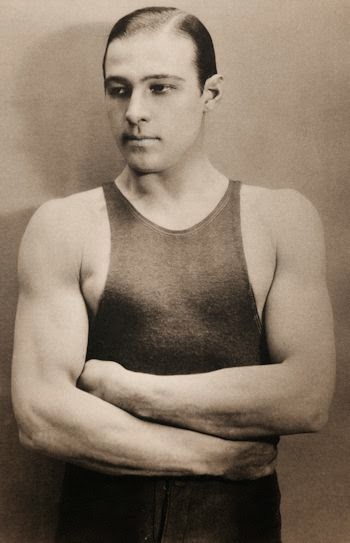Le Giornate del Cinema Muto - Day 2
I barely managed to crawl out of my bed, jet-lagged to the extreme. My body clock has no idea of the time, it does know it wants more sleep. Was late getting to the Verdi and was a bit further back than normal. Still, was just fine.
The day began with more Norma Talmadge. The 1913 Just Show Folks was a tale of an acrobatic wife (high diving into a net) and her drunkard and oaffish husband who is a clown. Enter in a creepy acrobat who seems to have the hots for Norma and once she rebuffs him, he tries to kill her via an accident with the net. A Lady and Her Maid was an unpleasant comedy about a lady who is no beauty and her maid (Norma with a blacked out tooth and Pippi Longstocking wired braids) getting makeovers. Not my meat, this one. Father’s Hatband (1913) had Norma and her boyfriend exchanging notes via the inner hatband of her father’s topper. Messages go awry when at the barber Dad grabs the wrong hat. The other customer has troubles once his wife finds the note for an evening assignation. This had charm to it. Lastly was Ghosts of Yesterday (1918) in which Norma played a dual role. Eugene O’Brien is again her leading man. Philip Carli kept this one going for me. Not a great film, some good parts, but it is a miracle Norma survived such silly plots to become such a draw at the box office. Silly plots with De Mille are one thing, in lesser hands not so great.
We revisited Ruritania this morning with the 1913 Edwin S. Porter version of the Anthony Hope novel that started all the madness The Prisoner of Zenda. Before I get to that, the morning Pathe-Baby film was Le Chameau, Vaisseau du Desert from France (1922-23) which highlighted the importance and reverence felt for this very special beast of burden. Next to open Ruritania was the actuality Ceremonies at Banjica: the Transfer of Old Flags to New 9 July 1911, 1912 (Sorry, the Czech titles too long). This featured lots of military marching, dignitaries, parades of horsemen, regimentals marching, ceremonial gun salutes, the blessing of the flags and every single soldier wearing enormous, prodigious mustaches! I found this to very quite compelling since this was filmed before the start of WWI and events that changed the map of Europe, the royalty from the various principalities and, indeed the world. This illustrated in real time what real-life Ruritania was for the military. Lots of pageantry, an age when it seemed that chivalry still existed. Fascinating.
So now we turn to a film I, frankly, never thought I would get to see, the 1913 version of The Prisoner of Zenda. From the still above, used in many a silent film history book, I did not have high hopes for this. Just about everyone cast was a little too long in the tooth, James K. Hackett, for instance was 44 and looked it. Never you mind that Ronald Colman was 45 when played Rudolf Rassendyll in the 1937 film (swoon). In the novels Rudolf Rassendyll is in his 20s and Hackett’s wife Beatrice Beckley played Princess Flavia looked more matronly. The treat was seeing David Torrance doing his turn as the evil half brother Prince Michael. The film was stagey, produced by Adolph Zukor, Famous Players in Famous Plays, natch! Even with Lewis Stone as Rassendyll in the 1922 Rex Ingram film (was he ever young?), that is a far superior film to this. Am I glad I saw it, yes. It really is an example of what people who know little of silent film imagine that all silent film is. Philip Carli played beautifully, I must say.
Skipping the annual special program for kids, I went back to the hotel to write up the recap for yesterday.
The next program was a series of Cinema delle Originale/Early Cinema from Segundo de Chomon in Barcelona (Iberico Films). Not all films, of course, were of Spanish origin. They varied from actualities showing local parks, glimpses of cities like neighboring Lisbon and Porto in Portugal, and the island of Majorca. There were fantasy films, films inspired by (or complete ripoffs) Georges Melies. Some had wonderful effects and for the Melies inspired I felt myself wishing that the films survived with color tinting intact.I have little doubt they must have been beautiful. The last film in this program was pretty gross, let just say it involved a man who had problems with a tapeworm. Not exactly the film you want to see before you go out to dinner. Yuck! Accompanied by the pair Stephen Horne and Frank Bockius.
Because my previously mentioned jet-lag has come home to roost, I decided to skip the screening of Nanook of the North. It is a film I recently saw and the only regret is missing Gabriele Thibaudeau’s new score which will feature native Inuit throat singing. I just cannot do it. Lots of programs tomorrow, an early day.
Movies = 21
Gelato = 0 (2 desserts yesterday)




Comments